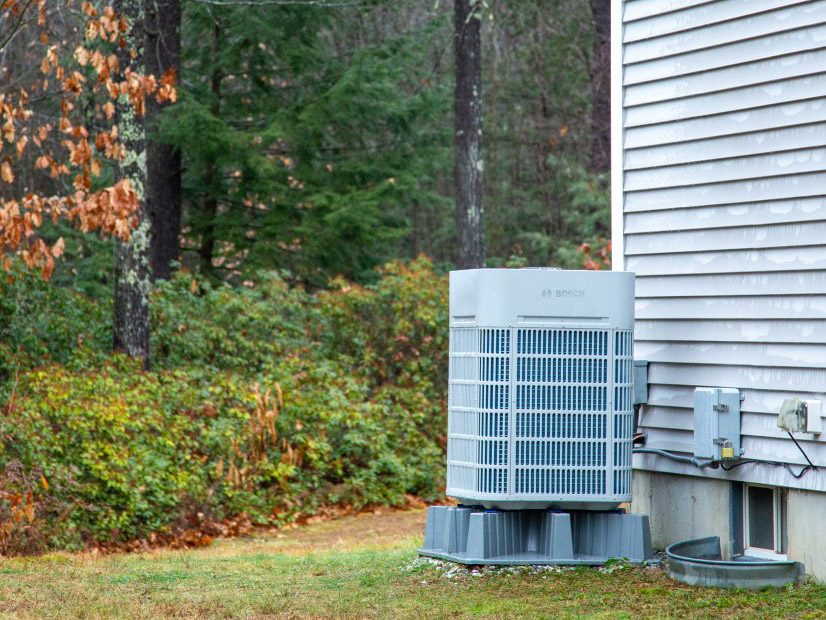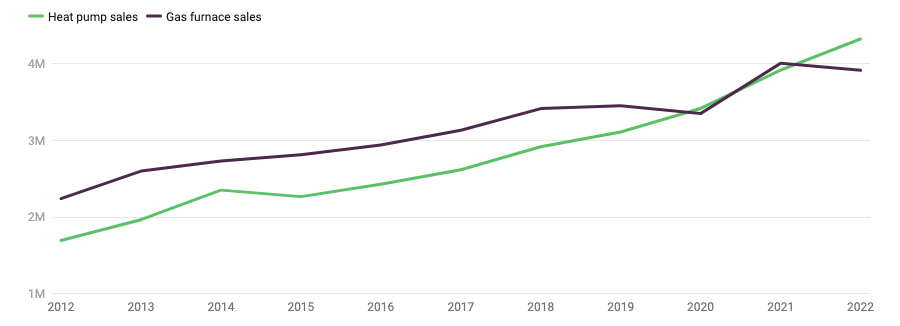With temperatures plunging and home heating bills rising across the country, the Department of Energy recently announced that four companies have developed high-efficiency cold climate heat pumps as part of the department’s Residential Cold Climate Heat Pump (CCHP) Technology Challenge.
The four companies — Bosch, Daikin, Midea and Johnson Controls — have completed laboratory testing for CCHPs that can “deliver 100% heating capacity without the use of auxiliary heat and with significantly higher efficiencies at 5 degrees Fahrenheit,” according to the Jan. 8 announcement.
The next phase of the challenge is “expected to involve the installation and monitoring of … prototypes in various cold-climate locations throughout the U.S. and Canada over the next year,” the announcement says.
Electric heat pumps, which can be used for heating or cooling, extract heat from the air or ground outside the building and then run the heat through a compressor before releasing it inside, according to a DOE factsheet. However, until recently, many of the available models did not perform well in subfreezing temperatures.
Launched in 2021, DOE’s CCHP Technology Challenge is aimed at fostering public-private partnerships “to address the technical challenges and market barriers to adopting next-generation cold-climate heat pumps,” the department says. The initiative has two tracks: one for heat pumps that can operate at 5 F, another optional one for ‑15 F.
The goal is to “ensure that Americans have access to more affordable clean heating and cooling options — no matter where they live,” Energy Secretary Jennifer Granholm said in the announcement.
In addition to the companies announced Jan. 8, four other companies ― Lennox International, Carrier, Trane Technologies and Rheem ― also have produced successful prototypes, according to DOE.
Space heating and cooling across all building types ― homes, offices, schools, hospitals and military bases ― accounts for 35% of U.S. energy consumption, according to DOE. Especially when paired with good building insulation and clean electricity, an electric heat pump may produce about half the GHG emissions of an oil- or gas-fired furnace while saving consumers an estimated $500/year on utility bills.
The Bosch prototype can operate down to a temperature of ‑13 F, according to a company spokesperson.
“The system is equipped with inverter technology, which ramps the compressor up or down to heat (or cool) the home in an efficient way,” the spokesperson said in an email to NetZero Insider. “What enables the cold climate heating is the enhanced vapor injection (EVI) compressor; it essentially borrows additional heat from the hot side of the … cycle and redirects it to help warm up the home on frigid days.”
Bosch and the seven other companies in the challenge are now field-testing more than 20 heat pumps at locations in 10 states and two Canadian provinces, according to a DOE spokesperson.
The Biden administration has promoted heat pump adoption as part of its drive to decarbonize the electric grid by 2035 and cut U.S. GHG emissions 50 to 52% by 2050, and states are following suit.
The Inflation Reduction Act includes a tax credit of up to $2,000 for the purchase and installation of heat pumps. State incentives in Maine have resulted in the installation of more than 100,000 heat pumps, leading Gov. Janet Mills (D) to set a new target of installing an additional 175,000 by 2027. (See Maine Blows Past Heat Pump Installation Target.)
Maryland’s recently released Climate Pollution Reduction Plan calls for state incentives to cover 100% of heat pump costs for low- and moderate-income households ― although the cash-strapped state will have to come up with extra funding to pay for such initiatives. (See Md. Emission-reduction Plan: High Ambitions, No Funding.)
Beyond cost, cold climate heat pumps will have to prove themselves through field-testing during extreme weather events, such as the current polar vortex blanketing major parts of the U.S. with subfreezing temperatures. The thermometer dropped close to or below zero in North Dakota, Minnesota and Wisconsin on Jan. 16.
According to Canary Media, 2022 saw heat pump sales edge past gas furnace sales for the first time. Business analysts such as Global Market Insights anticipate the CCHP market will grow 10% per year through 2032.



